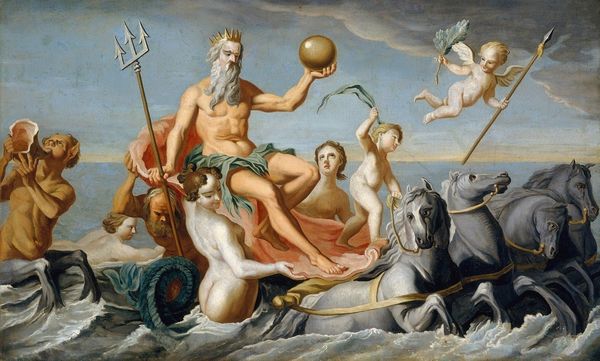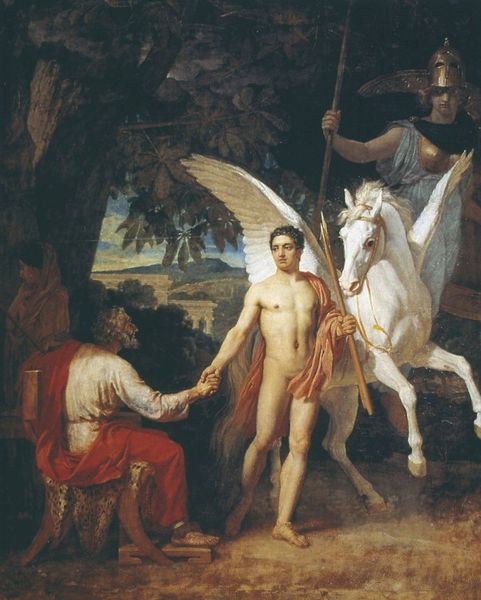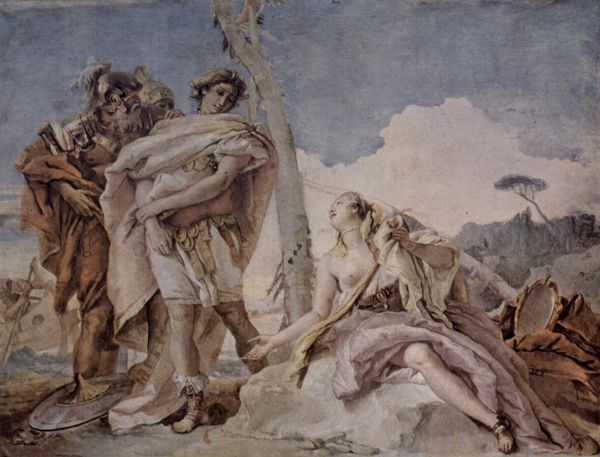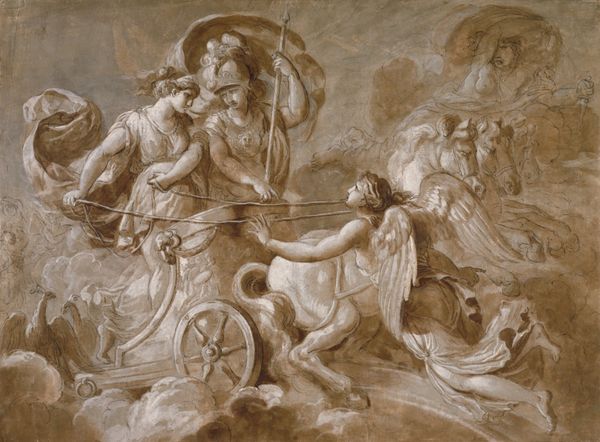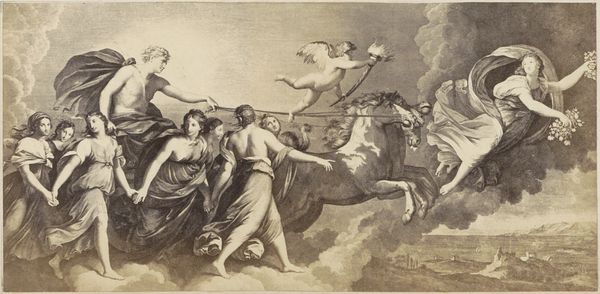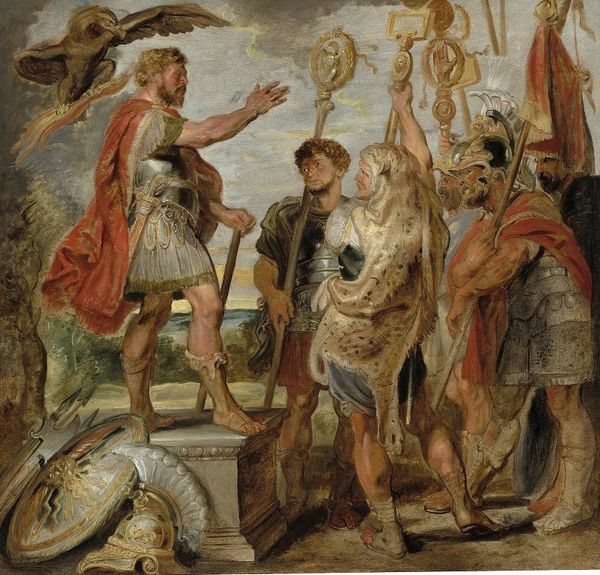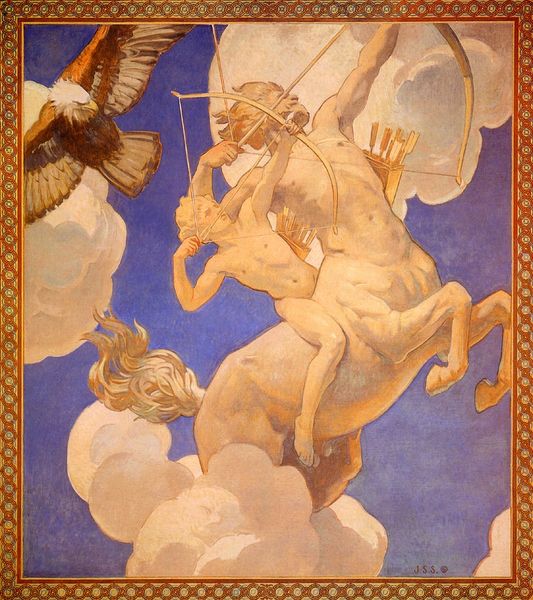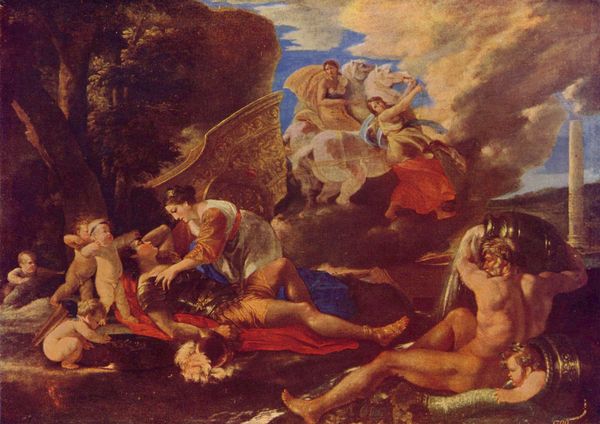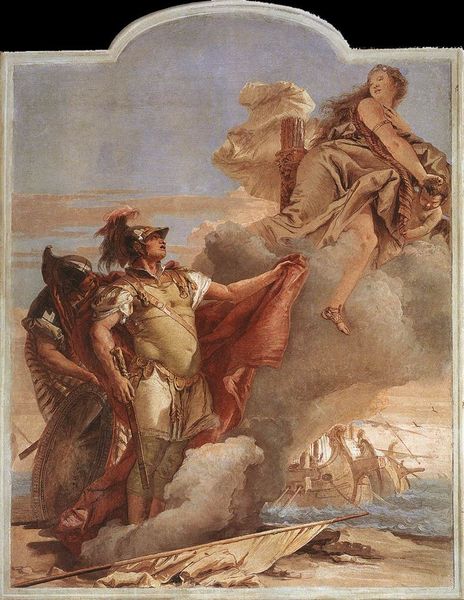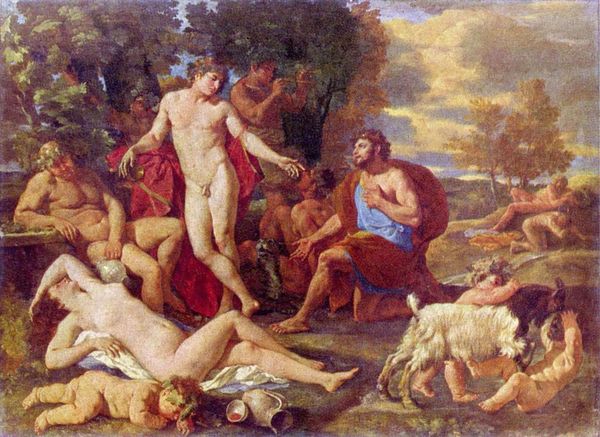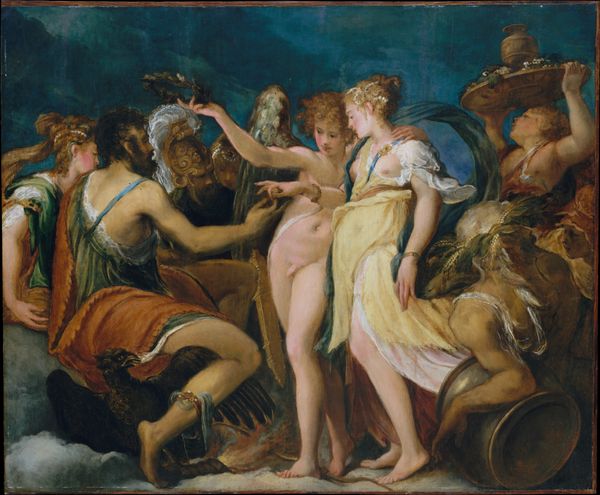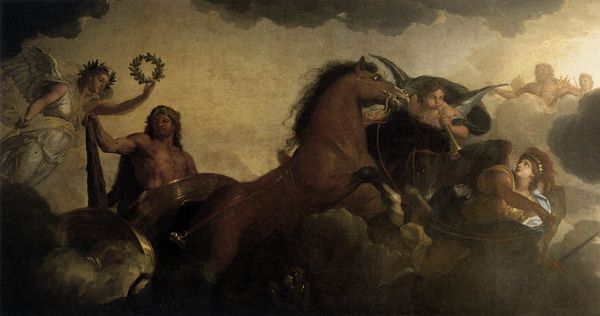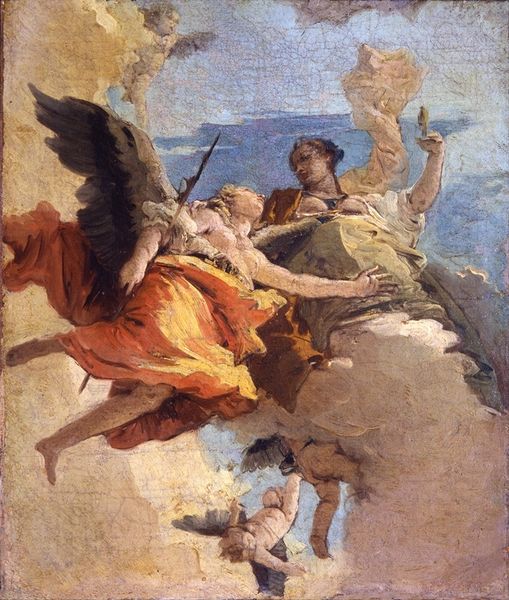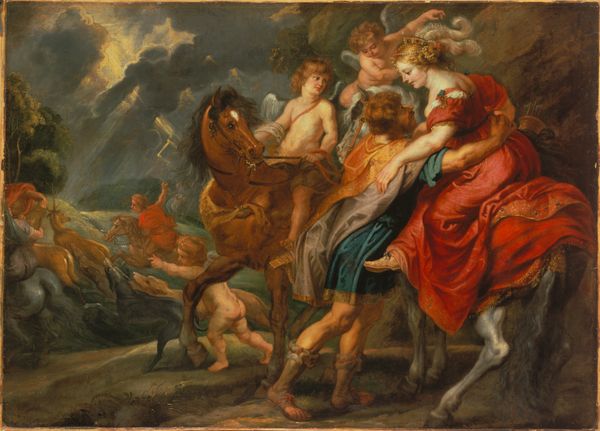
oil-paint
#
neoclacissism
#
oil-paint
#
figuration
#
oil painting
#
mythology
#
history-painting
#
academic-art
Copyright: Public Domain: Artvee
Curator: Oh, this is Jean-Auguste-Dominique Ingres's “Venus, Injured by Diomedes, Returns to Olympus,” painted circa 1803. What do you think? Editor: It's fascinating, almost dreamlike. The color palette is very light and ethereal, but the central drama—the wounded figure beneath the chariot—injects a somber note. Curator: Ingres was deeply invested in Neoclassicism, harking back to the order and idealized forms of ancient Greece and Rome. You see it in the crisp lines, the balanced composition, and the subject matter taken directly from mythology. Venus represents beauty, obviously, but also vulnerability in the face of conflict. Diomedes, who injured her in the Iliad, acts against nature. Editor: It’s striking that he places Diomedes so centrally, though. He dominates the foreground and has a cold and statuesque posture which creates this interesting contrast between the gods' and the mortal's role in this mythic narrative. Curator: Precisely. Diomedes becomes an agent of chaos and disruption, unsettling the divine order. Consider the iconography, as well: the chariot and horses pulling Venus skyward convey a message of divine transport and escape from worldly strife. And who attends her chariot if not an angelic figure of love, leading her? This painting could tell a moral narrative, where even immortals face harm, and must be rescued and healed by true love. Editor: So, this moment isn't just about a physical injury, but a symbolic one as well—an injury to the divine feminine, perhaps? It's like Ingres uses Venus's wounded state to say something bigger about humanity's capacity to wound even that which we idealize. Curator: I think that's very perceptive. There's definitely a social commentary threaded through this mythological scene. Perhaps it's Ingres commenting on France's revolutionary period, or mankind's penchant for upsetting social mores and systems in place. Even Venus can fall victim. Editor: Right, this canvas is far more nuanced than a simple re-telling of Homer. I am curious, though, about the blood. Venus bled Ichor, but it runs thick and dark. Do you think this an intentional, visual choice by Ingres to provoke and even repulse us? Curator: Definitely food for thought. What do you think this means for our modern museum goers? Editor: Seeing the symbolism intertwined with the political and the historical invites them into conversation, showing the enduring appeal of classical and symbolic painting. Curator: I agree. It is amazing how he imbued an ancient myth with potent ideas about conflict, social commentary, and hope, speaking still today.
Comments
No comments
Be the first to comment and join the conversation on the ultimate creative platform.
